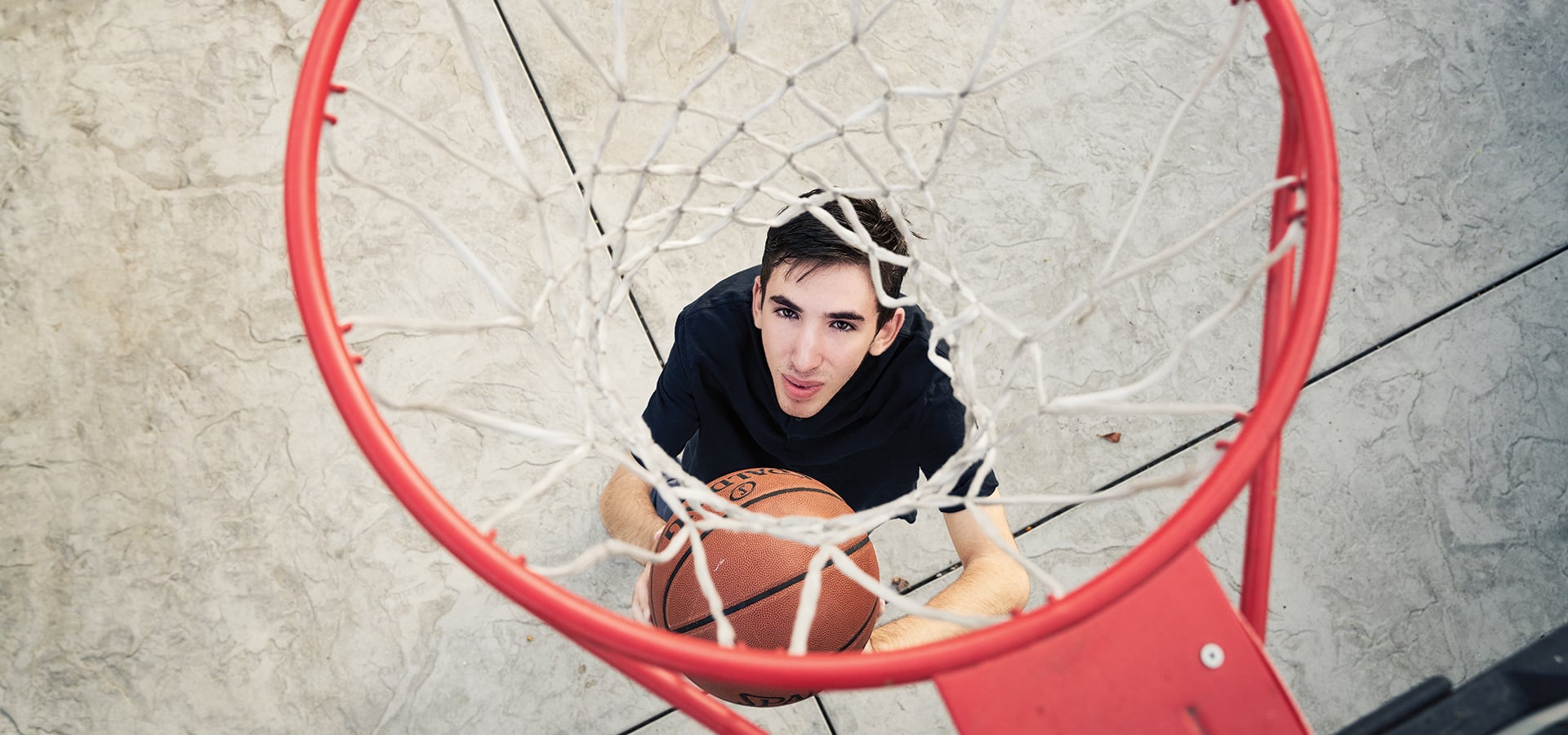Georgianna Junco-Kelman learned early on that knowledge is power. As a 9-year-old Cuban immigrant growing up in South Pasadena, she experienced discrimination and bullying because she did not speak English and was part of an education system that did not embrace differences.
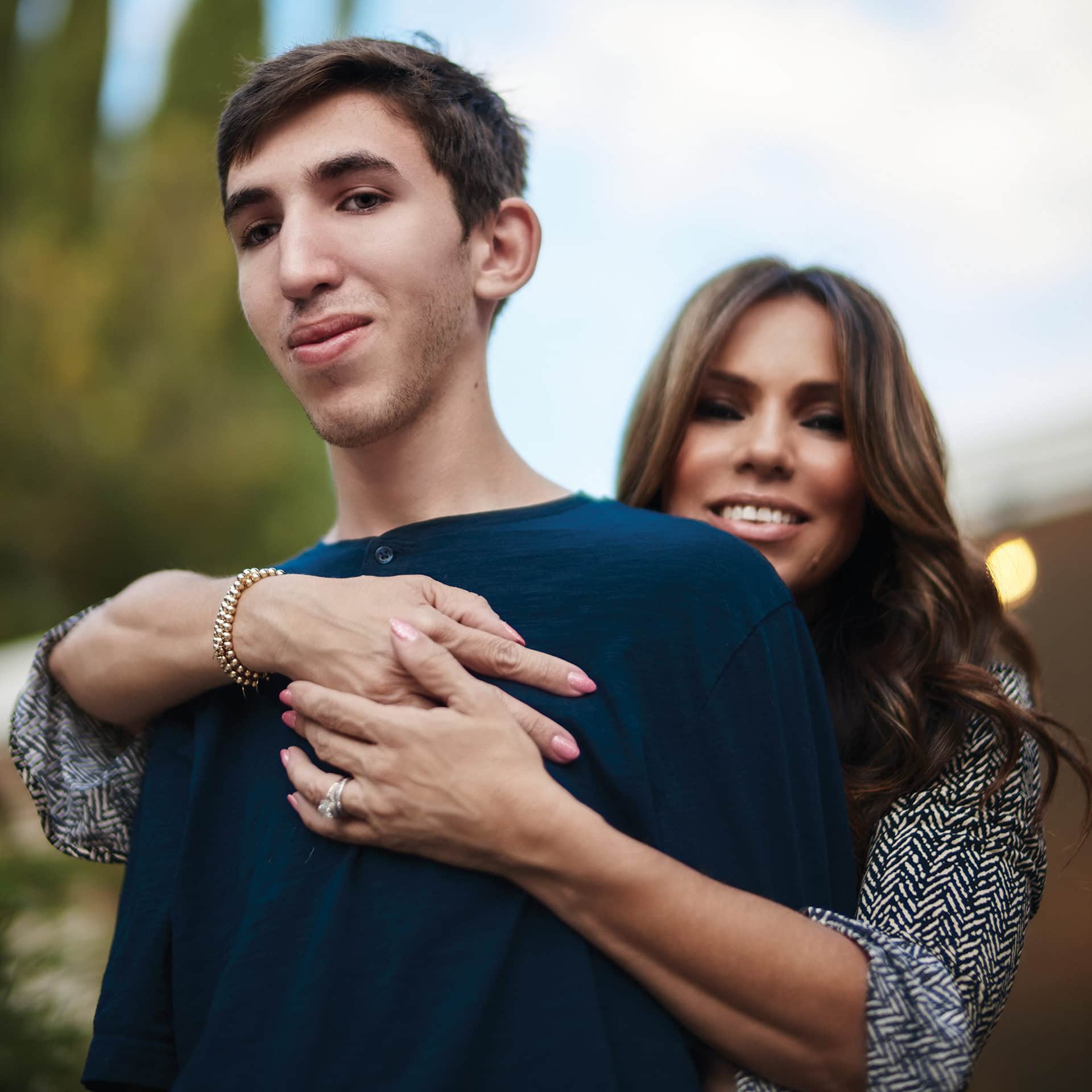
“Having that experience motivated me. It was the first time in my life where I thought, I will stand up for myself and never feel this helpless again.”
And so it was almost déjà vu when years later that helpless feeling reemerged—not concerning Georgianna herself but rather, her son Brandon, who was born with a brain malformation.
Georgianna and Brandon, who is now 17, sit in the sunny kitchen of their Studio City home. For a house with three boys and two dogs, it’s surprisingly quiet on a Sunday afternoon. Brandon’s brothers, Jack, 14, and Christian, 11, are studying in their rooms. Their dad, Jonathan, a criminal defense attorney, is putting away groceries.
Georgianna, an attorney, is a fiery powerhouse who speaks at breakneck speed. Brandon, whose smile envelops his face, has a speech impediment, but it does not impair his articulate thoughts.
Most notable is their complete transparency. “I don’t shelter him from anything. I’ve always been super honest about the world, about people, about his disability,” relays Georgianna.
Brandon doesn’t miss a beat: “I don’t want to be seen as a disability kid. I want to be seen for what I can do.”
The ability to speak was something doctors said Brandon might never do when at 2 months old he was diagnosed with focal cortical dysplasia—a malformation of the brain resulting in seizures called infantile spasms.
“We were told … that he might not walk or talk, or (that he might) be in a vegetative state,” shares Georgianna.
Short-term steroid injections initially projected to have little impact fortunately stopped the spasms. Still, consulting physicians from Los Angeles to Miami were at odds regarding long-term treatment—with one recommending an immediate hemispherectomy to remove half of his brain. Another said medication is a ‘Band-Aid;’ it was never known to work except in one situation.
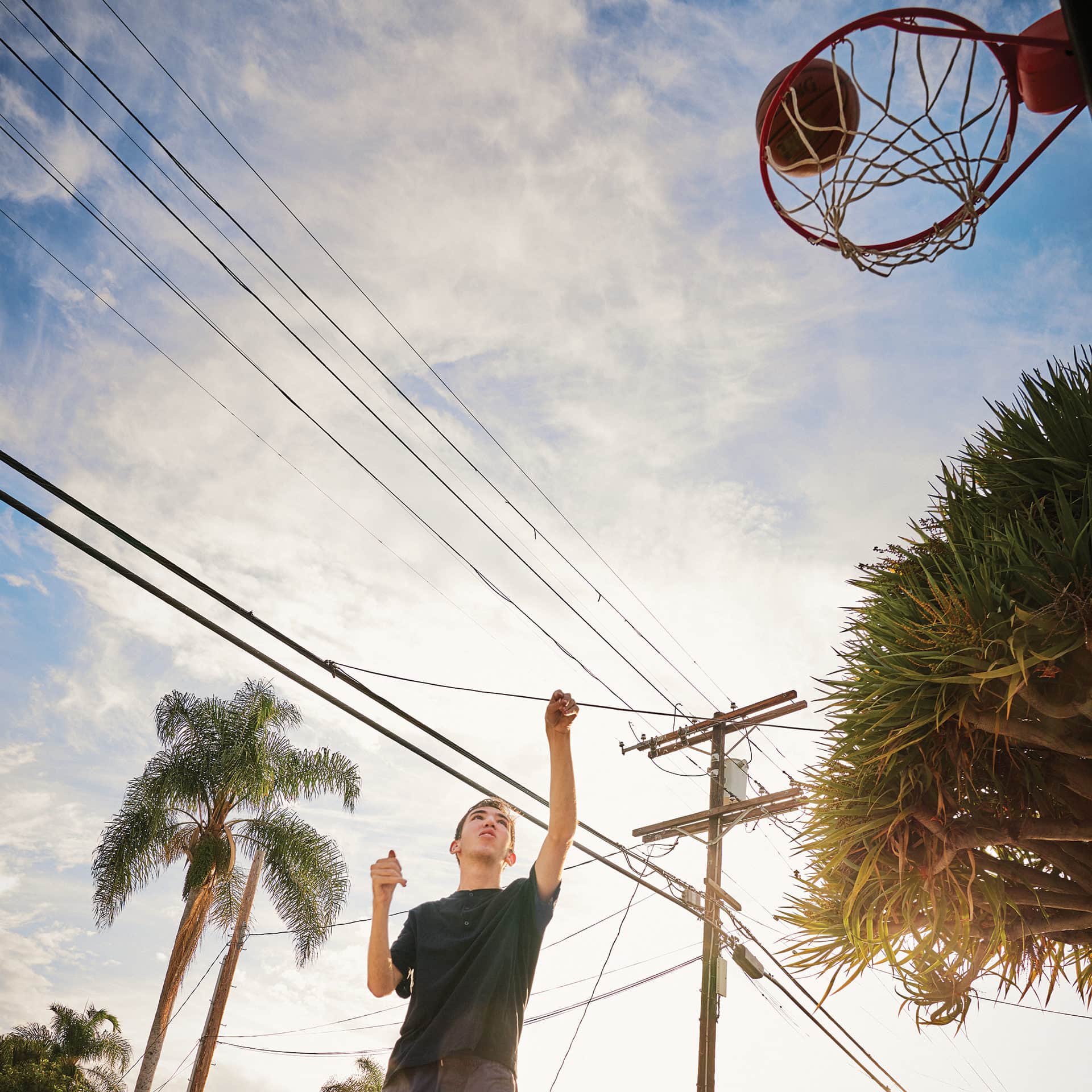
“I said, ‘one situation’ … OK, Brandon’s going to be that kid too,” remarks Georgianna.
Then at age 3, Brandon was diagnosed with epilepsy after experiencing a seizure, commonly known as petit mal. But by taking a combination of medications daily, he has been seizure-free for more than five years.
Those early seizures left him with global developmental delay, along with serious learning and processing disorders. Academically, he functions on a second- or third-grade level, although he keeps up socially and intellectually.
The Kelman family philosophy is inclusion. “We don’t treat Brandon with kid gloves. We treat him equally. His brothers dish it out the way they do with each other, and if Brendan does something he shouldn’t do, no one says, Oh, he’s disabled.”
At 5 feet, 8 inches, Brandon stands tall. However, his right side slightly curls forward. Georgianna explains: “His right foot is totally rigid. He has spasticity in his right hand, so he is left-handed by force. We didn’t think he could ever open a can of Coke or put on a jacket. But after 17 years of occupational therapy and sheer will, he can do it.”
And it is that sheer will and his ability to mimic others that pushed him to swim at age 7, and at 14, to practice dribbling nonstop on their neighborhood basketball court. When he was invited to a Golden State Warriors game to meet Steph Curry, he ended up shooting hoops—and made two baskets.
Now in 11th grade at Birmingham Community Charter High School (his fifth school in the LAUSD system), Brandon is in a full-inclusion program. That means he is mainstreamed in a regular classroom with a one-on-one aide, and is provided with an alternative curriculum designed for his needs.
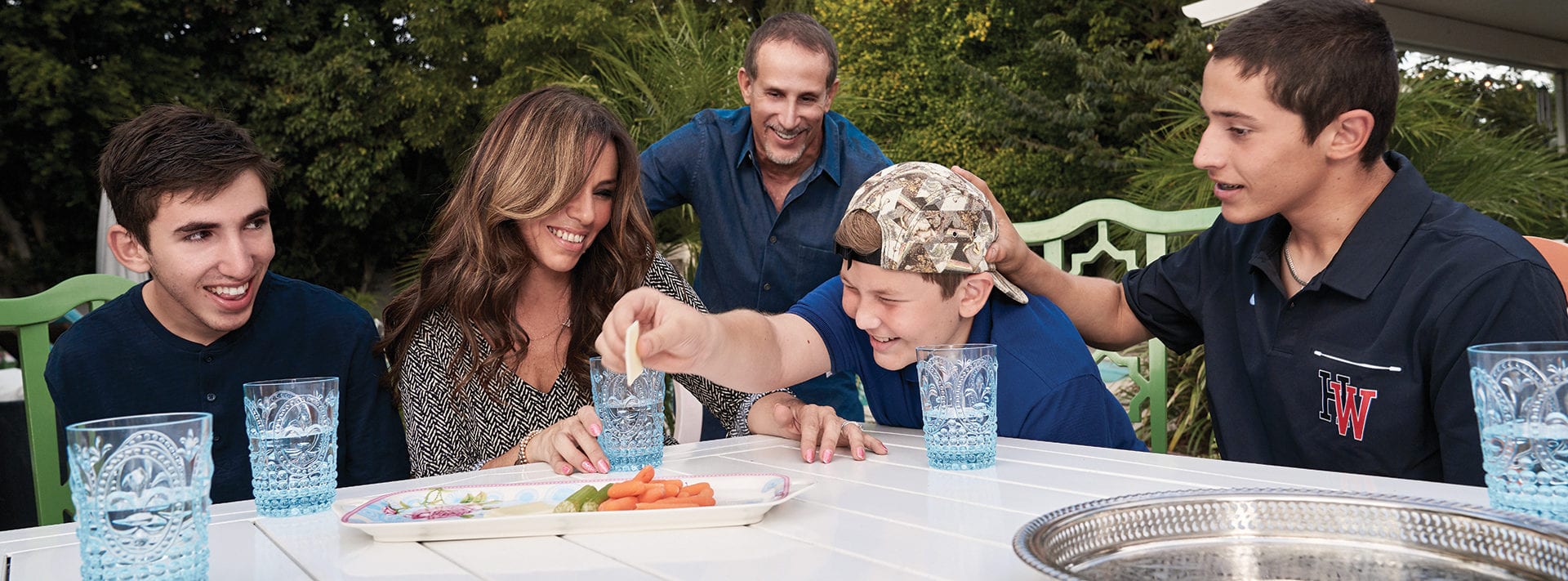
He spends most days after school with the basketball team working as team manager. In a stroke of luck, the coach happens to have a degree in special education.
“We lucked out; he totally got it. When I asked him if Brandon could get involved with the team in some way he was like, ‘What exactly are you asking for here? Do you want me to treat him in some special way or do you want me to give him some of the real responsibilities of a manager and treat him like one of the guys?’ We both agreed that the latter was the way to go,” Georgianna shares.
The players come from varying socioeconomic backgrounds. Some have even experienced homelessness and confrontations with the law—but it is here that Brandon has found acceptance.
“I didn’t have a lot of friends at my other schools. I’ve got some friends now and I get to be part of something,” says Brandon. “It makes me feel like I’m accepted, I’m not invisible, and I’m happy about myself.”
“I don’t want to be seen as a disability kid. I want to be seen for what I can do.”
Getting to this point has been a battle that began at the preschool level with securing an IEP (individualized education program) for placement in a regular classroom with support services. Instead, he was offered a moderate-severe classroom with a “restrictive” environment that was not in accordance with his IEP or, as his mom sees it, his social abilities. They eventually filed a complaint to obtain the proper placement.
Unable to find an appropriate LAUSD preschool classroom, Georgianna visited a “sought-after” preschool. She remembers the initial warm response. But as she described Brandon’s challenges, “You could hear a pin drop.”
Later, a tour of the school consisted of the administrator pointing out how Brandon wouldn’t adapt to the school settings. “That was my first rude awakening into the real world and the rejection and the isolation that comes with having disabilities.”
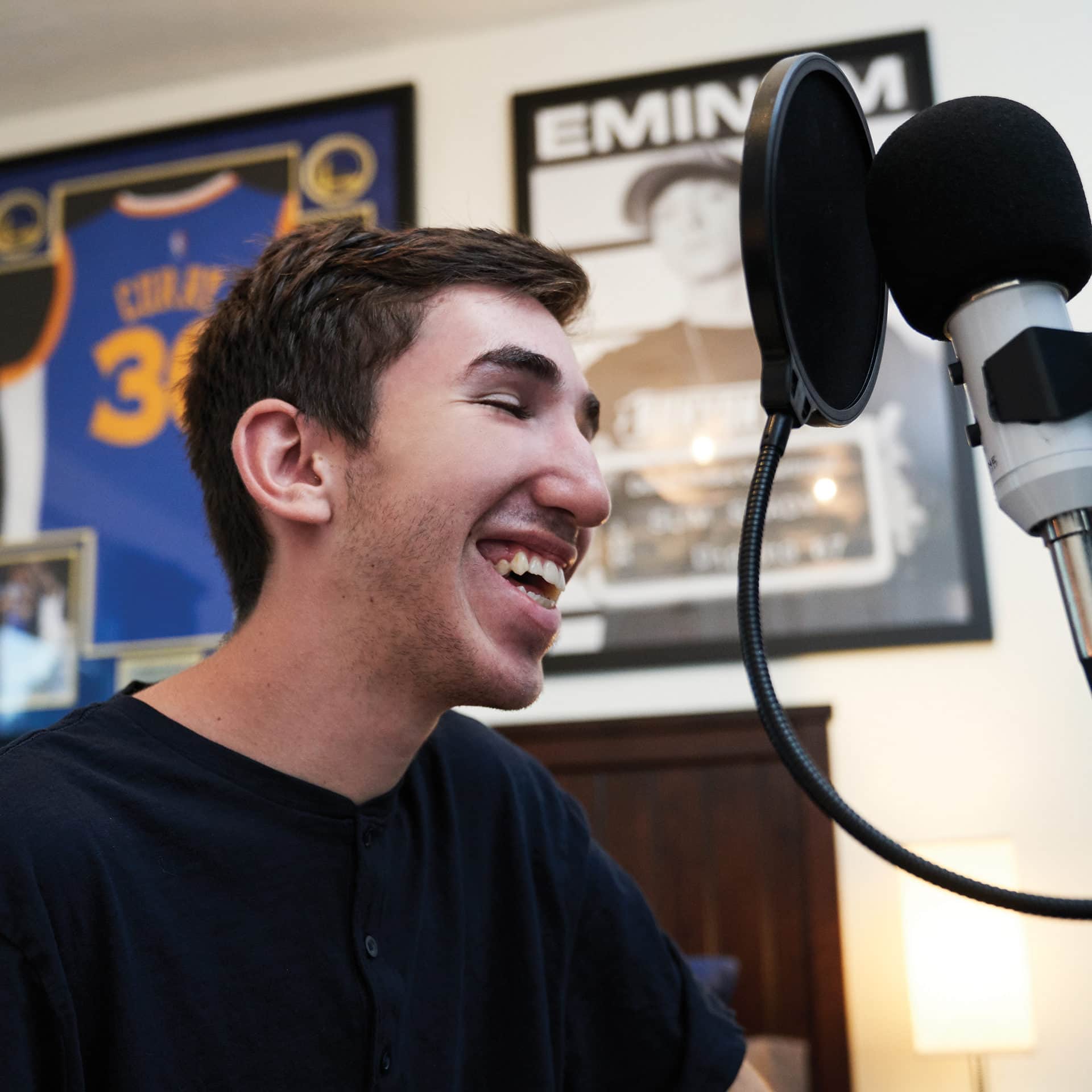
Searching for other options, Georgianna contacted McRory Pediatric Services and was referred to another local preschool. Brandon was accepted with open arms and told by the administrators that having him there “would be a gift to the other children.”
Brandon thrived being around the other kids by observing and mimicking. It was there he learned to walk at 3 years, 2 months, cementing her belief that an inclusive setting is essential for students like Brandon to thrive.
Georgianna’s experience with Brandon has impacted every aspect of her life, including her career. Fueled by a new sense of purpose, she pivoted from criminal law to special education.
“Parents are often so overwhelmed. Just caring for a child can be a challenge, and then you have to figure out what to do for school. Sometimes parents don’t know their rights. They don’t know the questions to ask, or that there’s help out there,” she explains. “I wanted to parlay my own treacherous journey into helping others traveling the similar journey.”
“There’s still the mentality that special education is a place, and not a service.” Georgiana explains, “It’s only a place when you’ve done all you can with services or alternative schools, but unfortunately the system usually starts in reverse.”
Today Brandon spends countless hours writing lyrics on a yellow legal pad that reflect his emotions. Influenced by his dad’s love of old-school rap, he’s inspired by Eminem and the song “Not Afraid,” which he says reminds him “that anything is possible.”
A few times a month, he goes to Studio City Sound where he works with a recording engineer to produce his songs, which he also raps. He now has nearly 20 songs on Spotify under King Lucky Kid, a name he came up with himself.
“Medically he shouldn’t be presenting the way that he is since his brain scans show a person who is severely handicapped,” says Georgianna, retelling a story about Brandon’s physician, Dr. Raman Sankar, Chief of Pediatric Neurology at UCLA. When Dr. Sankar shows the scans to his medical students, he says, “This one kid has defied all the odds. It’s because of him that I give families hope.”
Georgianna’s belief in inclusion and finding the right educational setting for all students extends to her hands-on nonprofit work, including Shane’s Inspiration (which provides playgrounds equipped for special-needs kids) and Autism Speaks. She also creates outreach programs in non-English-speaking communities.
“I fight for these kids like they’re my own. My litmus test is always Brandon. If I’m this kid’s parent, if this is Brandon, would this situation be good enough for me? That’s a really quick yes or no.”
KNOW YOUR RIGHTS
Education tips for parents with special-needs children.
- Insist on a formal assessment and secure an IEP directive. Public schools have a legal responsibility to test for disabilities.
- The words “We don’t do that” should sound alarm bells. Research “Special Education” on the LAUSD website. If you feel like you’ve hit a wall, contact an attorney.
- If LAUSD doesn’t offer sufficient services or classroom placement, families are able to recoup costs for attorney fees, a one-to-one aide, and tuition for public school alternatives. Those alternatives can include early intervention programs and preschools, as well as private schools such as Westmark School, Bridges Academy and Summit View, all of which serve children who have learning disabilities.
Architect May Sung Comes to The Rescue on a Studio City Reno Gone Wild
In the right hands…finally!
Join the Valley Community






